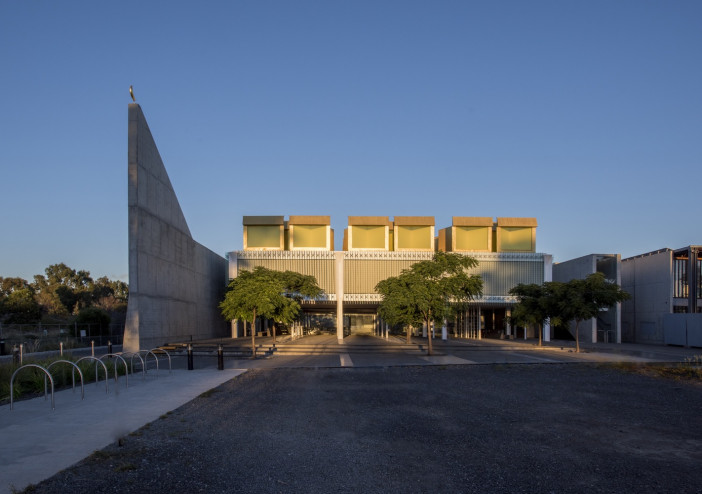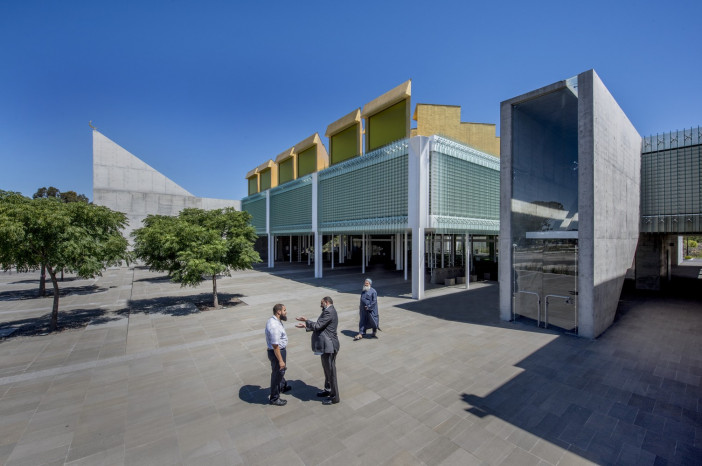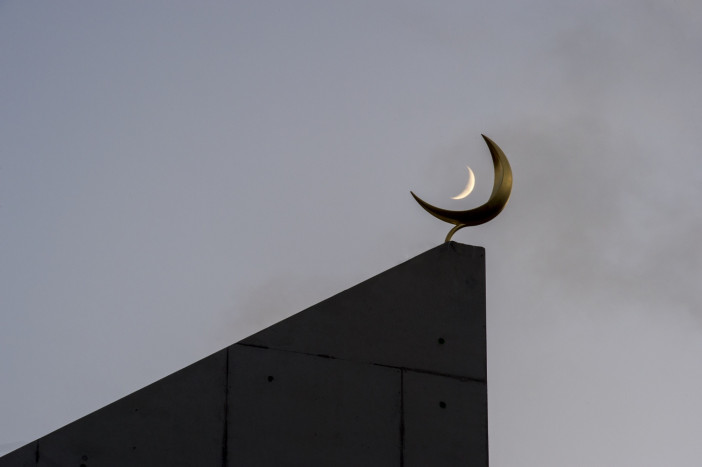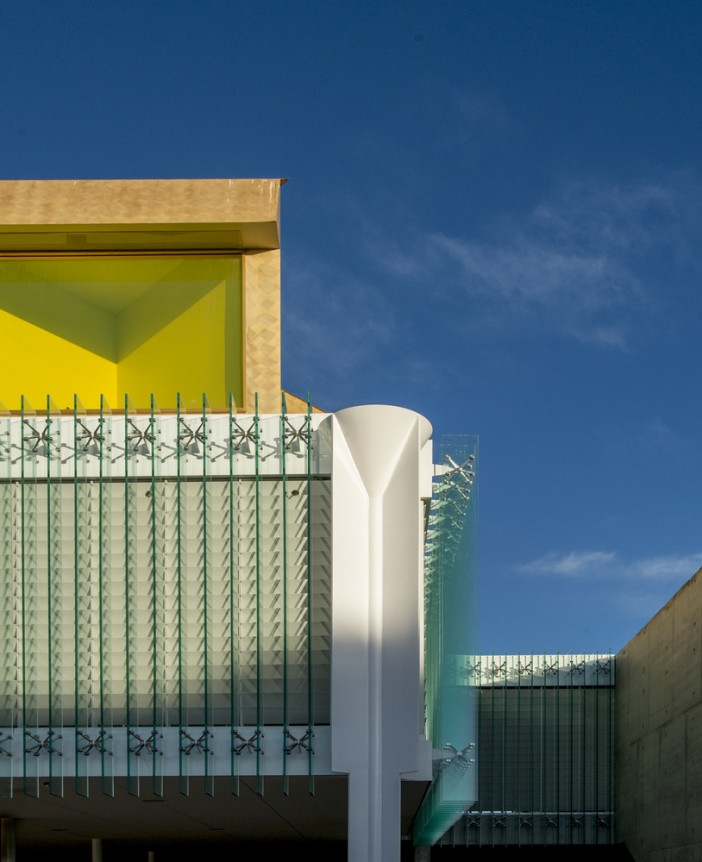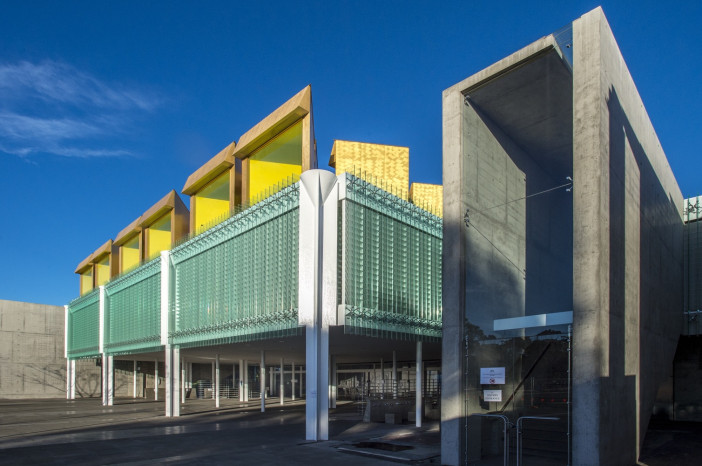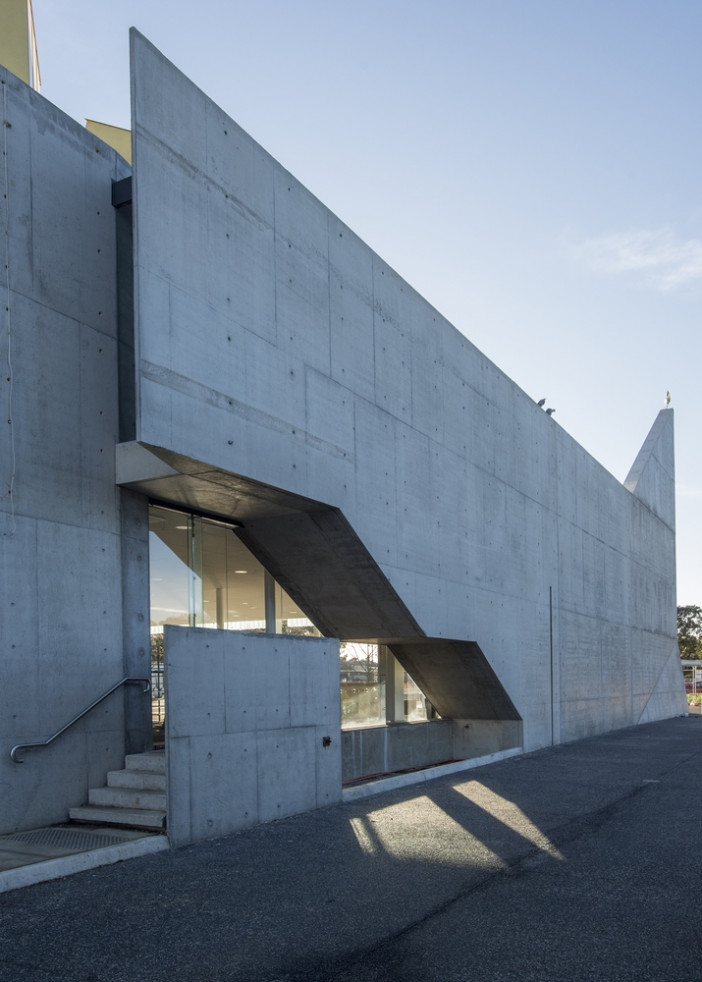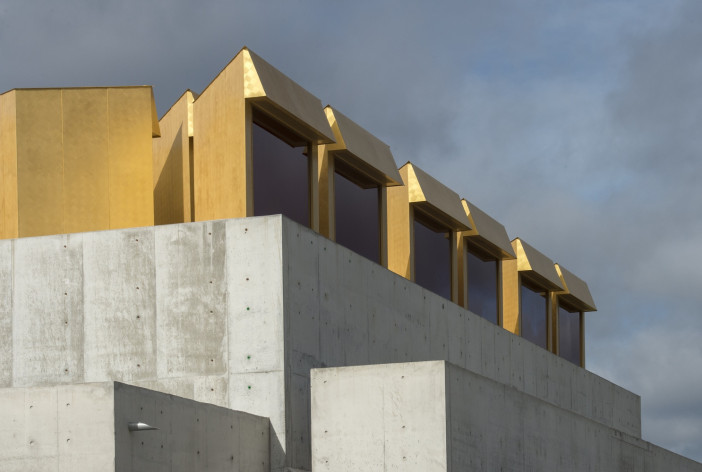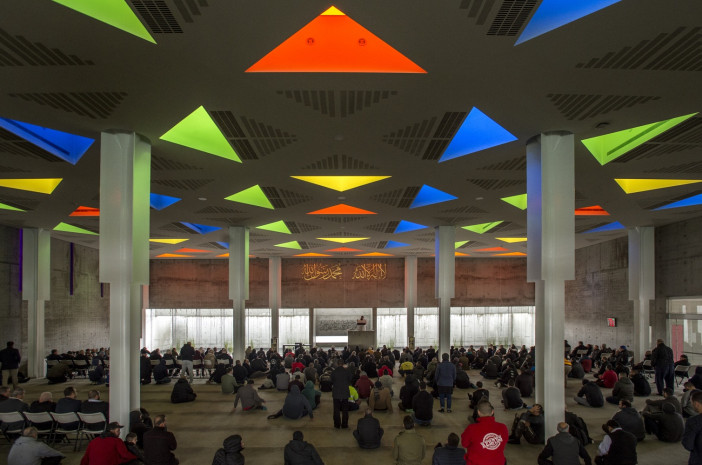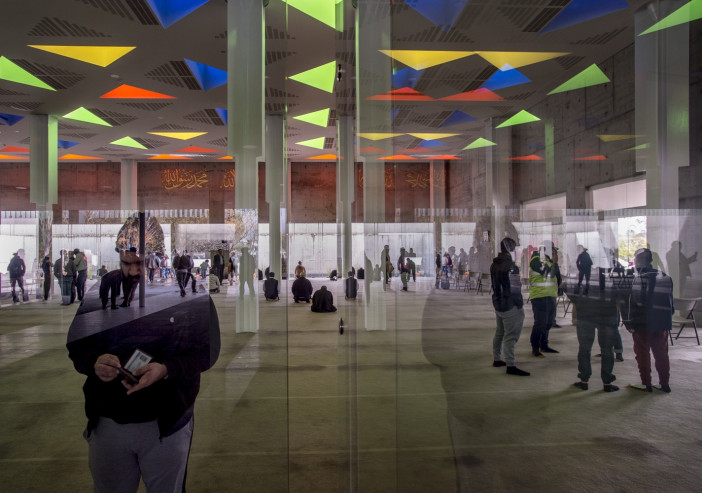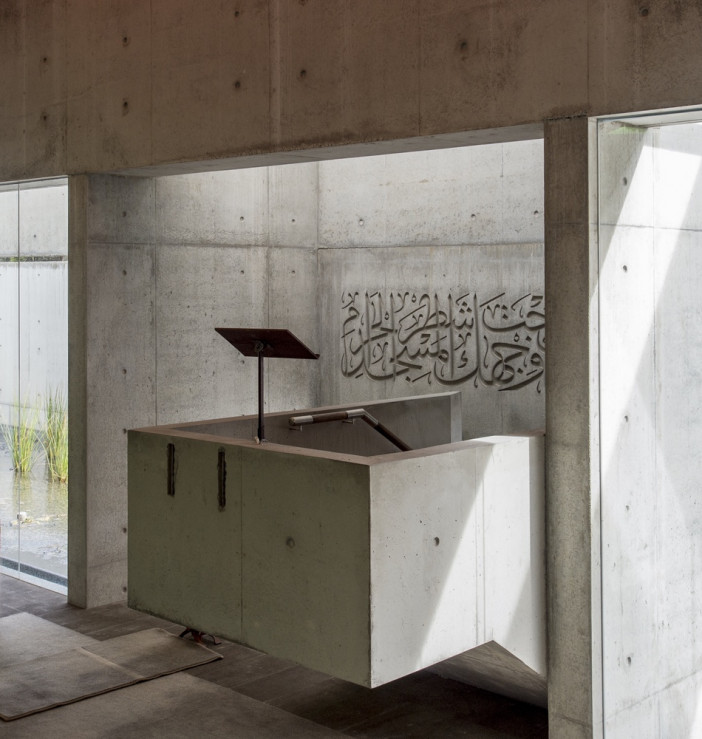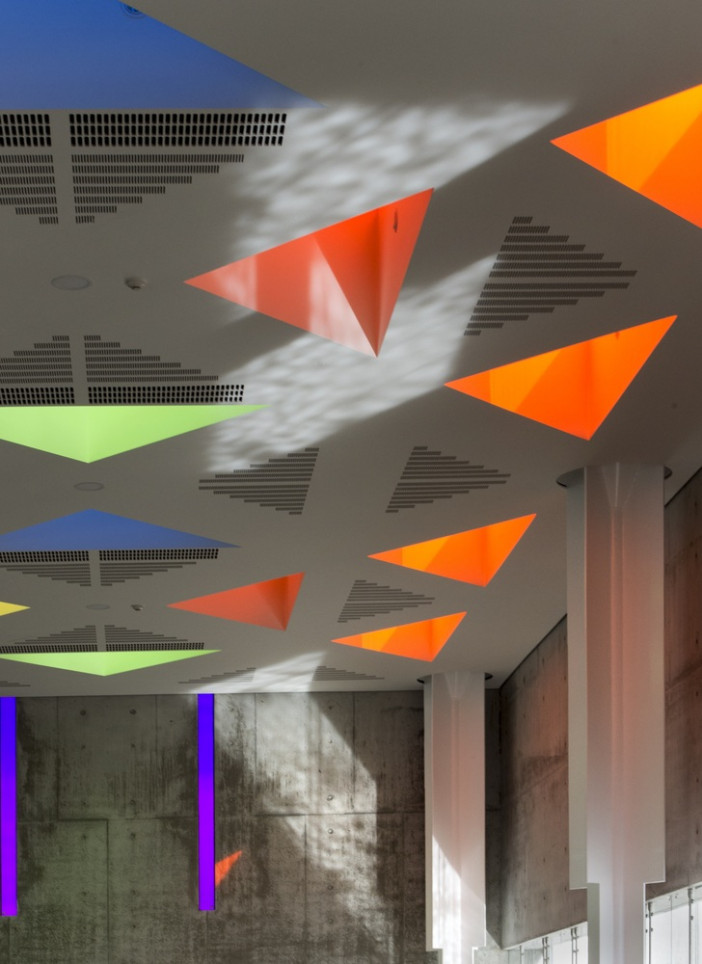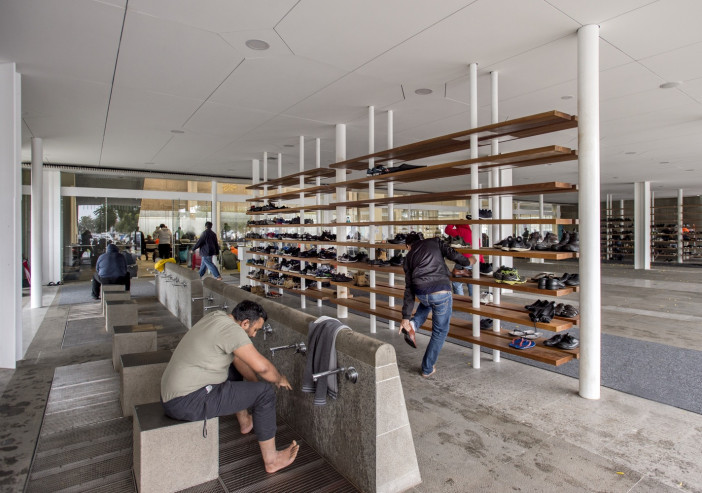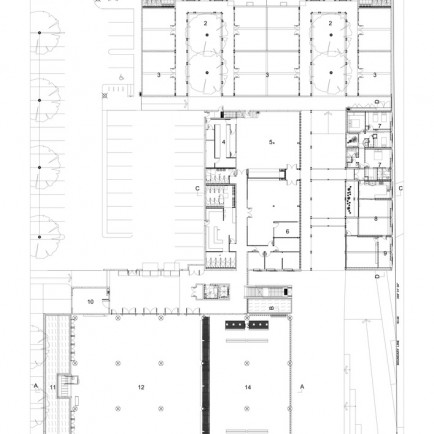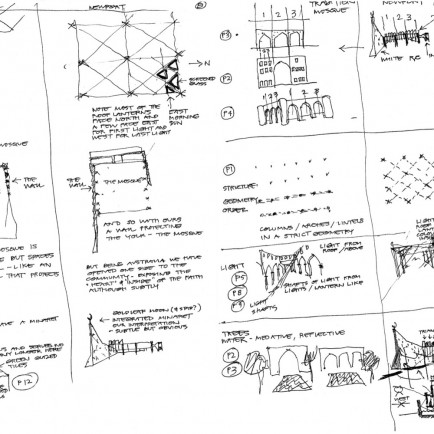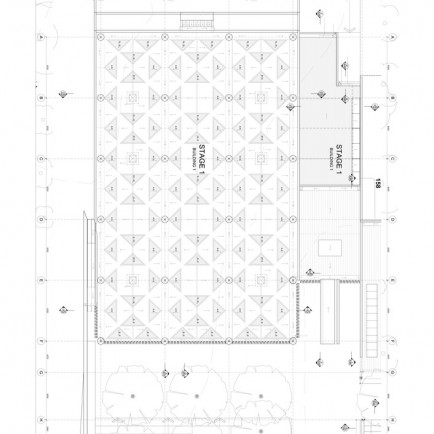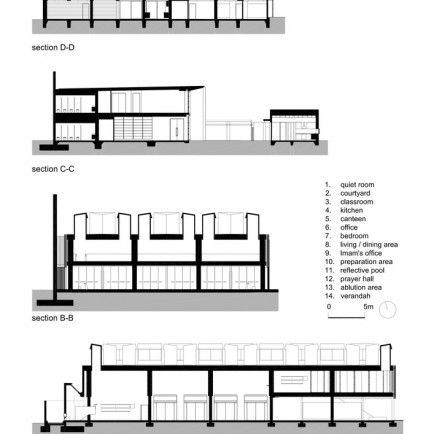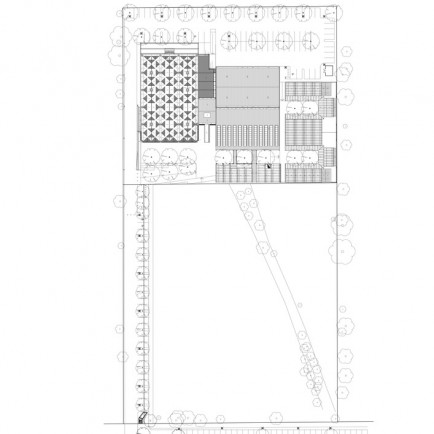Australian Islamic Centre
History
The first Australian mosque was built in Marree, South
Australia, in 1861 – a simple yet important structure marking the arrival of
the Islamic place of worship in Australia. Drawing upon the long history of
mosques as part of the built fabric of Australia’s multicultural and
multidenominational society, the Australian Islamic Centre has deep
significance for its community. It symbolises the maturity, vibrancy and
permanence of their congregation while also offering a physical and visual
manifestation of a new dialect for Islamic architecture.
Description
Murcutt has
worked on the design for the Australian Islamic Centre for over 10
years, collaborating with architect Hakan Elevli of Melbourne
practice Elevli Plus.
As perhaps the first truly contemporary Australian mosque, the
Australian Islamic Centre in Newport, Melbourne, is an architectural
and social marker of a new perception of Islam in Australia. By respectfully
recalibrating historical Islamic design conventions for contemporary Australia
– a country with a well-established and growing Muslim population – this
project heralds a new interpretation of mosques as a future part of our
suburbs.
When
the building completes in late 2016, it will provide a mosque and
community centre for the Islamic population of the Melbourne suburb Newport.
Murcutt's aim is to
create a contemporary mosque that can provide a community space for both
Muslims and non-Muslims, moving away from the traditional forms of Islamic
architecture.
"I'm
putting forward the idea that, we can in a society that is anti-Islam, we can
produce some work that actually can bring Islam back into our community and
becomes an addition to the culture
The
centre of the building is crowned by rows of projecting skylights that will
funnel light into the building through one glazed side.
it was to be inclusive and respectful of people of all faiths.
His design for the building draws from the functional and semiotic language of
traditional mosque architecture, considering fundamentals such as the
orientation towards Mecca of a mihrab (niche) within a qibla wall;
a large hypostyle (columned) central prayer hall; bodies of still water;
provision of facilities for ablutions completed prior to prayer; and separate
spaces, as required culturally, for men and women.
The building is organised as a set of interconnecting spaces
arranged across two levels. A congregational hall, library, cafe, commercial
kitchen, and sporting hall occupy the ground level, and the first floor,
accessed via dedicated arrival stairs, provides a set of elevated spaces for
women.
Murcutt’s design also deviates from time-honoured design
principles in important ways: it negates the need for a high domed roof,
instead offering a facade that favours transparency over enclosure, and
reimagines the form of the minaret – the tower from which the call to prayer
was traditionally announced – as an elevated wall demarcating an arrival
courtyard. Murcutt comments on how he considered historical precedents and
functional requirements when making these design decisions:
Murcutt’s design for the Australian Islamic Centre arranges twenty-four steel columns to create three bays from east to west and three from north to south, reflecting traditional mosque geometry. A reflective water courtyard to the west and fifty-five three-metre high roof-mounted lanterns naturally illuminate the main prayer hall. Glazed in colours symbolic to Islam (yellow, green, blue and red), these lanterns face the four points of the compass, drawing triangles of coloured daylight into the building in an ever-changing pattern determined by the sun’s movement.
References
Archdaily
Dezeen
Details
Location
South Kingsville VIC 3015, Australia
Owners
Australian Islamic Center
Architect Name
Year of Build
2016
Area
10000
Drawings
Map
History
The first Australian mosque was built in Marree, South
Australia, in 1861 – a simple yet important structure marking the arrival of
the Islamic place of worship in Australia. Drawing upon the long history of
mosques as part of the built fabric of Australia’s multicultural and
multidenominational society, the Australian Islamic Centre has deep
significance for its community. It symbolises the maturity, vibrancy and
permanence of their congregation while also offering a physical and visual
manifestation of a new dialect for Islamic architecture.
Description
Murcutt has
worked on the design for the Australian Islamic Centre for over 10
years, collaborating with architect Hakan Elevli of Melbourne
practice Elevli Plus.
As perhaps the first truly contemporary Australian mosque, the
Australian Islamic Centre in Newport, Melbourne, is an architectural
and social marker of a new perception of Islam in Australia. By respectfully
recalibrating historical Islamic design conventions for contemporary Australia
– a country with a well-established and growing Muslim population – this
project heralds a new interpretation of mosques as a future part of our
suburbs.
When
the building completes in late 2016, it will provide a mosque and
community centre for the Islamic population of the Melbourne suburb Newport.
Murcutt's aim is to
create a contemporary mosque that can provide a community space for both
Muslims and non-Muslims, moving away from the traditional forms of Islamic
architecture.
"I'm
putting forward the idea that, we can in a society that is anti-Islam, we can
produce some work that actually can bring Islam back into our community and
becomes an addition to the culture
The
centre of the building is crowned by rows of projecting skylights that will
funnel light into the building through one glazed side.
it was to be inclusive and respectful of people of all faiths.
His design for the building draws from the functional and semiotic language of
traditional mosque architecture, considering fundamentals such as the
orientation towards Mecca of a mihrab (niche) within a qibla wall;
a large hypostyle (columned) central prayer hall; bodies of still water;
provision of facilities for ablutions completed prior to prayer; and separate
spaces, as required culturally, for men and women.
The building is organised as a set of interconnecting spaces
arranged across two levels. A congregational hall, library, cafe, commercial
kitchen, and sporting hall occupy the ground level, and the first floor,
accessed via dedicated arrival stairs, provides a set of elevated spaces for
women.
Murcutt’s design also deviates from time-honoured design
principles in important ways: it negates the need for a high domed roof,
instead offering a facade that favours transparency over enclosure, and
reimagines the form of the minaret – the tower from which the call to prayer
was traditionally announced – as an elevated wall demarcating an arrival
courtyard. Murcutt comments on how he considered historical precedents and
functional requirements when making these design decisions:
Murcutt’s design for the Australian Islamic Centre arranges twenty-four steel columns to create three bays from east to west and three from north to south, reflecting traditional mosque geometry. A reflective water courtyard to the west and fifty-five three-metre high roof-mounted lanterns naturally illuminate the main prayer hall. Glazed in colours symbolic to Islam (yellow, green, blue and red), these lanterns face the four points of the compass, drawing triangles of coloured daylight into the building in an ever-changing pattern determined by the sun’s movement.


